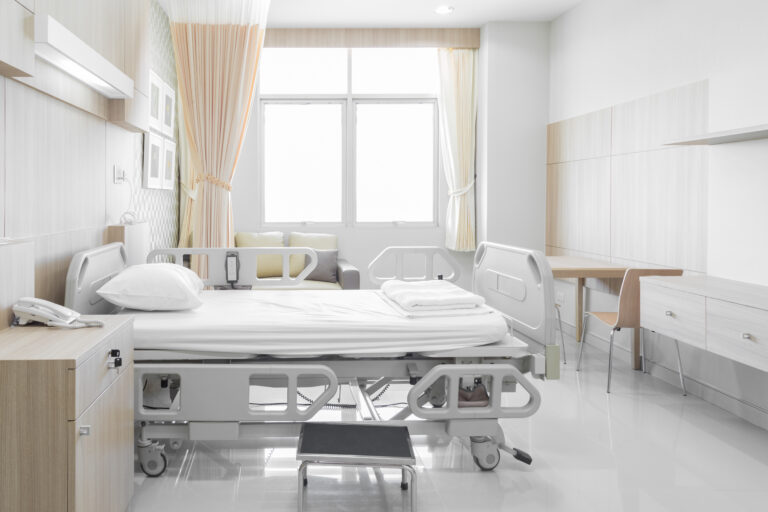
Hospital-associated infections (HAIs) are a major concern in healthcare facilities worldwide, putting patients at risk and increasing the burden on healthcare systems and their communities.
The CDC estimates that 1 in 31 patients in hospital facilities have an HAI, and more than a million HAIs are reported across the U.S. healthcare system every year resulting in 99,000 annual patient deaths. Direct HAI medical costs for hospitals exceed $28 billion annually.
According to the National Library of Medicine, “Hospital infections, and more generally, healthcare-associated infections (HAIs), are in fact one of the main problems in terms of morbidity, mortality, and costs that public health is currently facing.”
Improper and inadequate disinfection techniques can play a significant role in the transmission of HAIs. As the CDC explains, “It is well documented that environmental contamination in healthcare settings plays a role in the transmission of HAIs. Therefore, environmental cleaning is a fundamental intervention for infection prevention and control (IPC).”
Leapfrog Puts a Spotlight on Disinfection Protocols
In response to published evidence and guidelines on the importance of environmental hygiene on infection, The Leapfrog Group, a nonprofit watchdog organization that serves as a voice for health care consumers and purchasers, is increasing scrutiny on environmental services, making it imperative that hospital leaders identify and implement the best disinfection protocols.
Historically, Leapfrog has been focused on hand hygiene as a way to decrease HAIs. However, proposed changes currently under review include the development of a new standard around environmental hygiene. This update is the first emphasis the organization has put on surface disinfection, bringing public attention and transparency to disinfectant solution efficacy.
The Limitations of Common Disinfection Methods
In an environment where various pathogens coexist, maintaining a high standard of cleanliness and hygiene is essential to prevent the spread of infections. However, traditional cleaning and disinfection methods have their limitations.
Traditional Disinfecting Wipes
Wiping down surfaces in medical facilities is standard practice for disinfection. However, despite every effort, an alarming number of surfaces are not properly disinfected during manual cleaning in healthcare facilities. As the AJIC reported, “8 studies using direct covert observation or a fluorescent targeting method have confirmed that only 40% of near patient surfaces are being cleaned in accordance with existing hospital policies.” Manual cleaning efficacy is impacted by everything from staffing turnover to thoroughness and product, making it difficult to ensure the consistent, high-quality results that hospitals demand.
Disinfection with Ultraviolet Light
Modern solutions like ultraviolet (UV) and UVC light disinfection offer more advanced, chemical-free technology that harnesses the germicidal properties of UV light to inactivate harmful pathogens. This technology is more effective than manual cleaning, eliminating 97.7 percent of pathogens in operating rooms, according to the American Journal of Infection Control. However, UV solutions leave critical pathogens unaffected, and indirect surfaces remain unattended, creating infection opportunities in critical hospital treatment areas.
Fogging with Hydrogen Peroxide Solutions
Similarly, fogging technologies using hydrogen peroxide-based solutions have underscored the limitations of tech driven cleanliness as the harsh chemicals can harm equipment and require extended room closures to settle and dissipate, leading to downtime in busy hospitals. More importantly, the method is not universally effective against all pathogens, which can leave some microorganisms behind, perpetuating the risk of hospital-associated infections.
Introducing Nevoa’s Nimbus HOCL Fogging Technology
Advanced disinfection solutions like Nevoa’s Nimbus ultra-fine HOCL atomization technology provide improved disinfection outcomes, reduce labor costs, and ensure consistent results. By integrating such methods, hospitals can minimize the risk of HAIs, safeguard patient and staff health, and optimize resource allocation.
Powered by Nevoa’s proprietary microburst solution, this automated, hands-free disinfection solution eliminates pathogen transfer. Specifically, hospitals benefit from:
A product with no expiration date due to its patented mixing cap
A solution with EPA registered efficacy of LOG 4-6
A pH neutral and less corrosive solution
An environmentally safe and responsive cleaning commodity
A data-driven disinfection protocol with bar-coded bottles for quality control and tracking.
Notably, Nimbus’ HOCL fogging technology allows for immediate room re-entry, so busy hospitals always remain safe, productive, and impactful.
In total, nimbus achieves 300x better disinfection than manual cleaning alone, while relying on 64 percent less labor for terminal cleaning, zero pathogen transfer, and 30 minutes of labor gained for reallocation.
Efficacy and Impact Matter
The importance of advanced disinfection in hospitals cannot be overstated. With the increasing prevalence of hospital-associated infections (HAIs) and the associated financial burdens, there is a pressing need for healthcare facilities to adopt more effective and efficient disinfection solutions. Traditional methods have proven insufficient, while more modern approaches, such as UV light and hydrogen peroxide-based fogging technologies still have limitations.
The Nevoa Nimbus ultra-fine HOCL atomization technology offers a comprehensive solution that provides improved disinfection outcomes, reduces labor costs, and ensures consistent results. By integrating such advanced disinfection methods, hospitals can minimize the risk of HAIs, safeguard patient and staff health, and optimize resource allocation.
As the healthcare industry continues to evolve, the adoption of advanced disinfection technologies like Nevoa’s Nimbus will be crucial in maintaining the highest standards of cleanliness and infection prevention, ultimately improving the overall quality of patient care.
